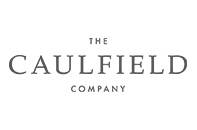Google Decides It Will Rank SSL Secure Sites Higher In A Bid To Favour Secure Servers
The boat was well and truly rocked in the SEO industry last month when Google announced that it is going to be favouring websites with an SSL certificate in the organic listings in a bid to promote platforms that it deems ‘secure’. Here, we’ve provided you with a brief introduction to SSL certificates, the HTTPS prefix, and the things you need to consider when securing your own website for better search engine results.
What is HTTPS and what does it stand for?
You may have seen the ‘HTTPS’ prefix appear in the URL in your browser when logging into your bank online or processing a payment whilst shopping on the web, but have you ever wondered exactly what it is and what it does?
‘HTTPS’ stands for Hypertext Transfer Protocol Secure. Its main purpose is to encode your online data and generate a protected channel to ensure that the information that’s being transferred online is secure and safe from any third party or hackers that are attempting to intercept the network.
To indicate that a website is secure, web browsers such as Google Chrome and Firefox will display a locked padlock in the website address bar, as well as ‘https’ compared to the usual ‘http’ in the URL address.
You can create an HTTPS version of your website by installing a Secure Sockets Layers (SSL) certificate onto your web server.
SSL and SEO
Traditionally, Google has always made it clear that its algorithm finds it a little harder to rank sites that operate under an SSL certificate. However, the organisation made a U-turn recently when it announced that, moving forward, it is actually going to be favouring websites that operate under an SSL certificate. Here’s what Google said back on 7th August:
“Over the past few months we’ve been running tests taking into account whether sites use secure, encrypted connections as a signal in our search ranking algorithms. We’ve seen positive results, so we’re starting to use HTTPS as a ranking signal.”
Since Google released the statement above, there has been a great deal of coverage in the news recently discussing Google’s decision to give secure sites a ranking boost. Many SEOs are excited about the move, while others are concerned that the news will encourage webmasters to go straight out and organise an SSL certificate without fully considering the implications.
Things to think about when switching over to a secure server
If processed correctly, by following the right procedures and steps, moving over to HTTPS should have no negative impact on your SEO. Google has indicated that having a secure site will, in fact, have a very small but positive effect on your page rank.
But you need to tread with caution to avoid getting penalised for using a secure site. To ensure this is not the case, there are a couple of things that need to be considered:
• Google will see HTTP and HTTPS sites as completely different entities, so your new pages need to be listed in Webmaster Tools separately. Google values unique content within a website, and if you don’t follow these steps, Google will see both pages as two different sites, causing duplicate content issues.
• It takes more resources to run an HTTPS website, too, so before going ahead with the switch, work out whether your hosting server is able to cope with the extra demands of a secure site.
Though you may be tempted to run straight out and arrange your SSL certificate, think about whether or not your website (and ultimately your business) is going to benefit from secure encryption in the long run. Bear in mind that, according to Google, HTTPS is only a minor ranking signal, so installing an SSL certificate may not be the answer to all your problems, particularly if your site is suffering from poor onsite optimisation, is packed full of duplicated content or is hosting a spammy link profile!






















